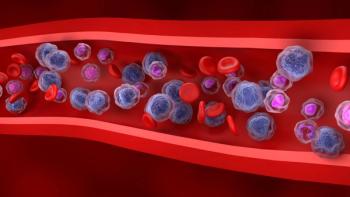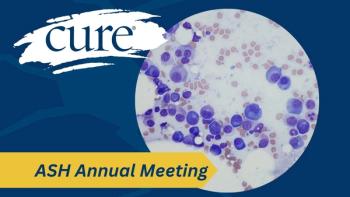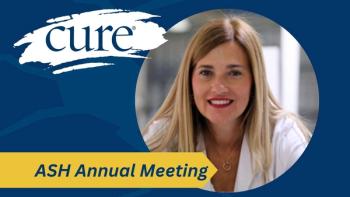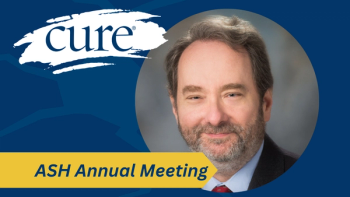
On Bucket Lists, Exercise and Defying the Odds With Myeloma
About 24 years ago, Jim Bond was handed a stage 3 myeloma diagnosis and told to start checking things off his bucket list. Little did doctors know, but one of the top items on that list was survival
Editor’s Note: This piece was submitted by a contributing writer and does not represent the views of CURE Media Group.
After being diagnosed with stage 3 myeloma and given, at most, three years to live, Jim Bond and his wife, Kathleen, considered checking off items from their bucket list and giving into his cancer. Instead, they decided to give it their all. That was 24 years ago.
Jim is currently in remission and physically active. What made them fight? Jim remembered another serious health setback he had in high school—a sports injury that ended his goal of playing college baseball. “The injury turned out to be a blessing. I spent more time in college studying, graduated at the top of my class, got a great job and married Kathleen. Since good things resulted from what seemed to be a bad situation, we decided the same could be true of my cancer diagnosis,” he said.
During his 24 years, Jim has had five relapses, six remissions, two autologous and two allogeneic transplants, been diagnosed with a secondary cancer and was once advised to seek hospice care. Yet, all these years later, Jim considers himself a lucky man.
Jim’s and Kathleen’s luck didn’t just happen. They asked questions, record answers and consider themselves equal partners with the medical team in treatment decisions. They are not shy about getting a second opinion, even if his doctor might feel insulted. He is committed to participating in clinical trials, wherever they may take place. He has good insurance and excellent family support, and he made regular and appropriate exercise an integral part of his daily life. They set goals, created routines, found motivation and, most importantly, teamed with medical teams who are experienced with myeloma, transplants, and since 2012, with his secondary cancer, acute myeloid leukemia (AML).
“When I say exercise, it’s not about joining a health club,” said Jim. “It’s doing whatever I can and forcing myself to do it. If I get lethargic, exercise helps me both physically and mentally.”
According to Jim, exercise matters regardless of the condition he’s in. “When I was recovering from my transplants, it was often a matter of just sitting up in bed, then standing as long as I could, then walking the hospital floor while hooked up to the IV. Our new hospital transplant floor built an exercise room with a treadmills and exercise bike, in part due to our recommendation,” Jim said. “I’ve experienced peripheral neuropathy too, especially when I was taking Thalomid (thalidomide). The bottom of my feet and fingers slightly tingled. I make an effort to stay on my feet because using muscles seems to help.
“I believe in daily exercise of some sort. I might take a two-mile walk, cross-country ski in the winters, but I avoid hills because of risks to my bones. I like golf, but I don’t hit it as far as I used to, and [I also enjoy] gardening and doing my own yard work. I like moving around. It’s rare that you’ll catch me sitting. And in winters, I make a point of using a treadmill.”
Jim also sets goals, the biggest being his participation in the American Cancer Society (ACS) Pan Ohio Hope Ride (POHR), an annual four-day, 328-mile bike tour from Cleveland to Cincinnati. Kathleen, a volunteer leader with the ACS, conceived of the idea for the tour to raise money for ACS patient services, including the more than 34 Hope Lodges where adult patients stay for free.
“I never cycled before and didn’t even own a bike,” said Jim. “But watching Kathleen’s passion over two years to plan for it, I decided to buy a bike, seek advice and train for the first POHR in 2007.”
As the first POHR approached, Jim and his family attended a fundraiser in their hometown of Cleveland. When a local reporter asked Jim’s son, Bob, if he thought his father, being a myeloma patient, could do such a long ride, Bob responded, “When my Dad says he’s going to do something, he’s going to do it.”
“When I saw Bob’s reply on TV that evening, I knew I was going to ride as many miles as I could!” Jim said.
With advice from Dennis Hoffer, a cyclist and co-chair of the Pan Ohio Hope Ride with Kathleen, Jim rode all 328 miles over four days with his older son, Jim, and daughter-in-law, Stacey at his side. That started Jim on the first of nine annual twelve-week training programs leading up to each POHR.
He doesn’t ride much the rest of the year and instead focuses on other types of exercise. “I really look forward to the POHR,” Jim admitted. “I get into the best shape of the year.”
For him, the POHR has benefits that are far greater than his health. His sister, Denyse, and niece, Mandy, and younger son, Bob, also ride the POHR. Jim invites others to consider going to POHR.org and riding with him this July.
“I believe in clinical trials,” continued Jim. “I know about the power of them. And even if they didn’t help me, I know I would help to keep advancing knowledge about the disease. But we only have about five percent of adult cancer patients who participate in trials in this country.
“We want to help people get access to leading treatments as we did. I was able to leave my home for nine months to participate in a trial that saved my life. Not everyone can do that. And that’s why I am a passionate fundraiser for Hope Lodges through the Pan Ohio Hope Ride. They allow patients to stay for free, and that gives them more options for leading treatments that may not be available locally, such as certain clinical trials.”
Jim is looking forward to the tenth POHR this year. “We had 40 riders the first year, and expect more than 400 this summer. POHR has raised more than $6 million for over 34 Hope Lodges around the country and for other ACS patient services.”




